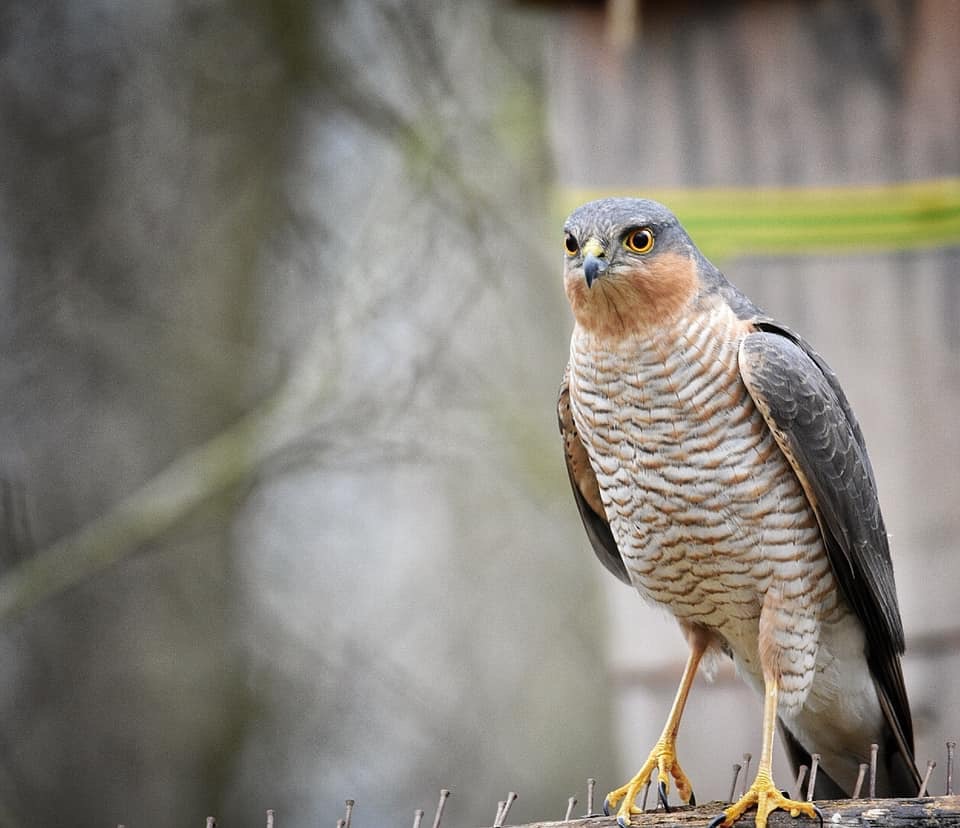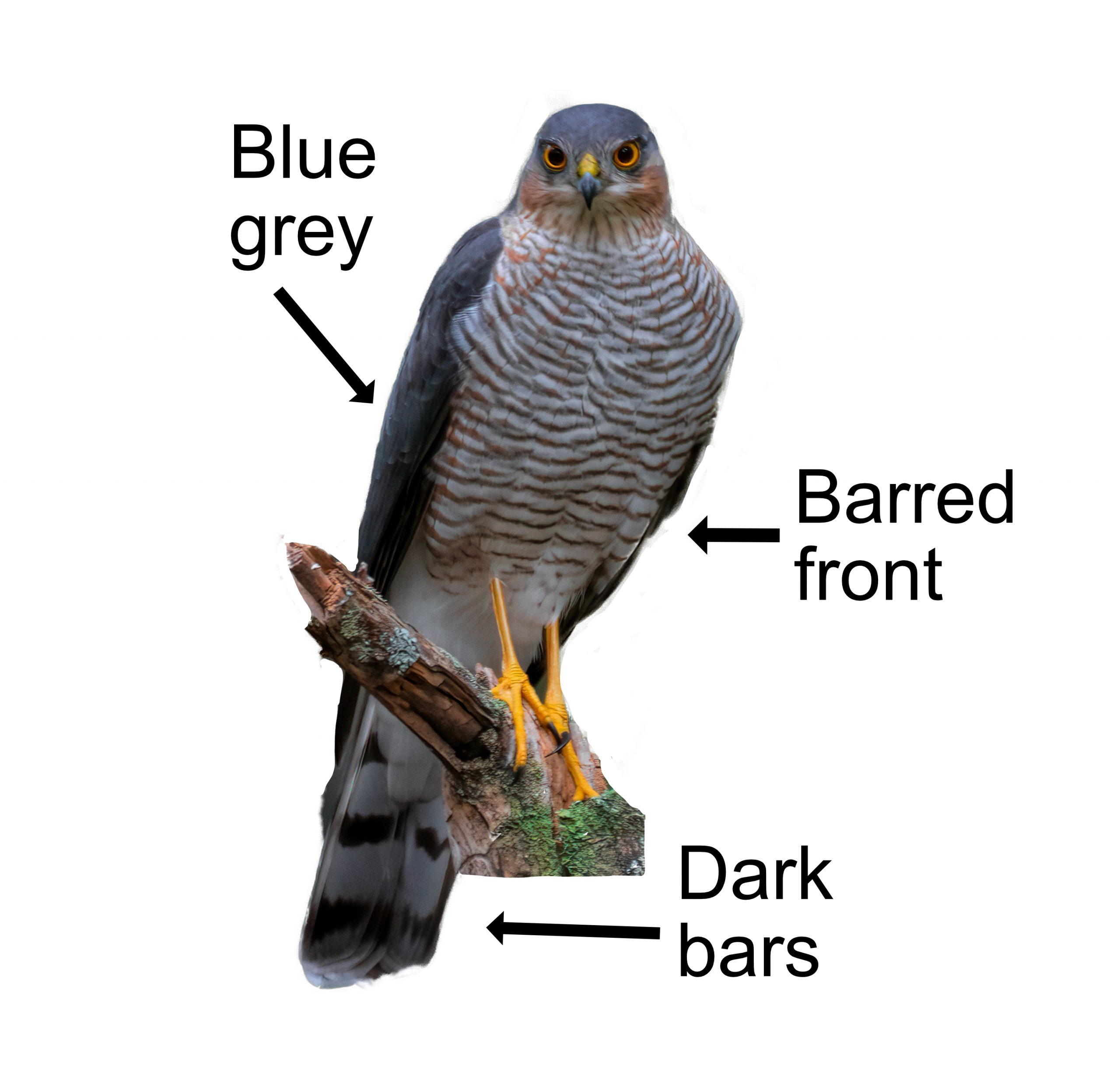
If you find a pile of feathers in the garden, you have probably had a visit from a Sparrowhawk. If you are exceptionally lucky, he may still be on your fence post plucking his victim to bits and having a little dinner.
The Sparrowhawk is one of our smallest birds of prey, the male being about Collared Dove sized. The male is a blueish-grey and has reddish barred underparts that can look orange. He has a grey tail marked with 4 or 5 dark bars. The female is 25% larger than the male and can weigh twice as much – one of the greatest size differences between the sexes in any bird species. She is browner and has dull white underparts with grey bars. She also has a pale stripe over her eye where she has applied her mascara to look fierce. She is not a fatty by being bigger but an Amazonian killing machine.

In flight, the Sparrowhawk has a long slim tail and relatively short broad wings, adaptations for manoeuvring through trees and woodland glades. They fly by doing quick wing beats followed by long glides (flap-flap-glide) unlike a Kestrel (which is bigger and flaps about all over the place). Sparrowhawks are like deadly cruise missiles, flying low over the terrain and looping up over the top of a hedge, inches away from it, and diving down the other side to take their victims by surprise. All you see is a flash of blue-grey wings and the long barred tail. If the hedgerow birds suddenly start making alarm calls, it could be an incoming Sparrowhawk.
They eat mainly small birds like Chaffinch, Yellowhammers, Great Tits and especially (you guessed it) Sparrows. The female will take larger birds such as Blackbirds, Starlings, and Collared Doves. During one year, a Sparrowhawk can munch through over a 1,000 cute little feathered victims. Don't get too upset though as cats, with over 10 million in Britain, kill far more birds than the Sparrowhawk does. Their deadly reputation makes racing Pigeon owners and chicken breeders particularly twitchy, though their claims it was nasty Mr Sparrowhawk that did it have not been backed up by any studies.
The Sparrowhawk nests in woodland where it can hunt along the edges and clearings or make a short trip to your garden. The nest is made of twigs and sticks in the fork of a tree and can measure up to 60cm (2ft) across. The eggs are laid in late April and the incubation of the 4-6 pale blue, brown-spotted eggs is done by mum while dad gets food by going to the supermarket garden feeder. The eggs hatch after 35 days. Both parents then feed the youngsters who stay in the nest for a further 28 days before venturing out to sit on a nearby branch and be teenagers. (Whatever!) The youngsters finally fly a few days later but still depend on mum and dad to feed them for another 20 days while they finish stealth flying school. The Sparrowhawk is silent for most of the year. Dad only making a rapid "kew-kew-kew" call when bringing in a tasty morsel for mum to eat while she sits on the nest.
The Sparrowhawk is now one of the most common birds of prey in Europe. There are more Sparrowhawks than you think there are, as that flash of grey out of the corner of your eye can too often be dismissed as a Pigeon. There are about 80,000 spread all over the country. They are largely resident and don't move far. Some North European birds may move south in winter and reach the eastern shores of Britain. A few decades ago, the use of chemicals in farming nearly wiped out the Sparrowhawk, but banning these chemicals has allowed them to recover. The English folk names for the Sparrowhawk include 'blue hawk', referring to the adult male's colouration, as well as 'hedge hawk' from its cruise missile tactics.
The Latin name is ’accipiter nisus’ with ’accipiter’ meaning 'hawk' and ’nisus’ from the king of Megara. According to Greek mythology, Nisus, the king of Megara, was turned into a Sparrowhawk after his daughter, Scylla, cut off his only purple lock of hair (which made him invincible but look a bit weird) and presented it to her lover (and Nisus' enemy), Minos (a nasty piece of work who fed young girls to his pet Minotaur). Don't you think being turned into a Sparrowhawk to escape is pretty cool?
.